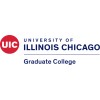
Preparing a Food Is Medicine Intervention to Promote Healthy Eating and Blood Pressure Control
HypertensionObesity2 moreHypertension and obesity are both major risk factors for cardiovascular disease (CVD), a leading cause of death for Black women in the United States. The investigators propose examining the feasibility and acceptability of the 12-week RN-CHeFRx (Real Nourishment and Cooking Healthy Food is Rx) intervention - grocery delivery, cooking classes, and nutrition education - for Black women with hypertension and obesity to improve nutritious eating habits and blood pressure control.

eCulinary Medicine Emphasizing Herbs/Spices to Increase Vegetable Intake
HypertensionDiet2 moree-Culinary medicine emphasizes on herbs and spices, will increase consumption of vegetables and reduce sodium in the diets of people with hypertension and lead to a more favorable health profile.

Acute Effect of Individual Variants of Agonist-antagonist and Traditional Agonistic Resistance Training...
Arterial StiffnessHypertension1 morePrevention and non pharmacological treatment of prehypertension and hypertension stage 1 The effect of individual variants of agonist-antagonist and traditional agonistic resistance training on cardiovascular parameters in individuals with normotension and hypertension. What does the study involve? Cardiovascular parameters Body composition Blood tests for heart disease Training intervention A. Resistance training protocol: 75% 1RM, 10 reps, 3 sets, 2 min rest between sets and exercises, 16 exercises Agonistic RT - upper body Agonistic RT - lower body Agonist-Antagonist - upper body Agonist-Antagonist - lower body B. Aerobic training: 60% SF max, 4 x 10 min, 2 min rest between sets Intraabdominal wall tension activity The Borg rating of perceived exertion Handgrip testing Repetition testing (RM)

CALM- 2 - Controlling and Lowering Blood Pressure With the MobiusHD™
HypertensionResistant HypertensionThe objective of this study is to evaluate the safety and effectiveness of the MobiusHD System in a prospective, randomized, double-blind, sham-controlled multi-center pivotal study.

Riociguat in Children With Pulmonary Arterial Hypertension (PAH)
HypertensionPulmonaryThis study was designed to evaluate the safety, tolerability, pharmacodynamics and pharmacokinetics of riociguat at age-, sex- and body-weight-adjusted doses of 0.5 mg, 1.0 mg, 1.5 mg, 2.0 mg and 2.5 mg TID in children from ≥6 to less than 18 years with pulmonary arterial hypertension (PAH) group 1. The study design consisted of a main study part followed by an optional long-term extension part. The main treatment period consisted of two phases: titration phase up to 8 weeks and a maintenance phase up to 16 weeks.

Verification of the Efficacy and Safety of the BAROSTIM NEO System in the Treatment of Drug Resistant...
High Blood PressureTo assess the long-term safety and efficacy of the BAROSTIM NEO System in trial (NCT01471834) participants.

Consistency of Electrical Cardiometry and Pulmonary Artery Catheter
Pulmonary Arterial HypertensionRight Ventricular DysfunctionCurrently, the gold standard method to estimate CO in patients with PAH or RV dysfunction is pulmonary artery catheter (PAC), however, the invasiveness and complexity of PAC has limited its usefulness in many clinical scenarios. By measuring the thoracic electrical bioimpedance, electrical cardiometry (EC) technique has been reported to noninvasively estimate cardiac output (CO) and other parameters related to cardiac contractility and fluid status in various cardiovascular disorders. However, in patients with pulmonary arterial hypertension (PAH) and/or right ventricular (RV) dysfunction, few study has been reported. The aim of this study is to evaluate the agreement between CO measured by PAC as the referenced method and CO measured by EC technique in patients with PAH and/or RV dysfunction.

Nursing Intervention for Knowledge and Self-care Behaviors in the Face of Hypertensive Disorders...
Hypertensive Disorders of PregnancyHypertensive disorders of pregnancy (HDP) are a leading cause of maternal and fetal morbidity and mortality worldwide. The lack of knowledge and self-care behaviors by the pregnant woman in the face of THE could be associated with their appearance. This is a randomized controlled pilot trial type study, with a control group that will receive the usual prenatal care and an intervention group that will additionally receive the nursing intervention to improve knowledge and self-care behaviors in the face of HDP. Each group will include 30 pregnant women, for a total of 60 users. The level of knowledge and self-care behaviors will be assessed before and after the intervention.

Physiological-based Cord Clamping in Congenital Diaphragmatic Hernia
HerniasDiaphragmatic4 morePulmonary hypertension is a major determinant of postnatal survival in infants with a congenital diaphragmatic hernia (CDH). The current care during the perinatal stabilisation period in infants born with this rare birth defect might contribute to the development of pulmonary hypertension after birth - in particular umbilical cord clamping before lung aeration. An ovine model of diaphragmatic hernia demonstrated that cord clamping after lung aeration, called physiological-based cord clamping (PBCC), avoided the initial high pressures in the lung vasculature while maintaining adequate blood flow, thereby avoiding vascular remodelling and aggravation of pulmonary hypertension. The investigators aim to investigate if the implementation of PBCC in the perinatal stabilisation period of infants born with a CDH could reduce the incidence of pulmonary hypertension in the first 24 hours after birth. The investigators will perform a multicentre, randomised controlled trial in infants with an isolated CDH. Before birth, infants will be randomised to either PBCC or immediate cord clamping, stratified by treatment centre and severity of pulmonary hypoplasia on antenatal ultrasound. For performing PBCC a purpose-designed resuscitation module (the Concord Birth Trolley) will be used.

Evaluation of Minimal Hepatic Encephalopathy in Patients With Cirrhosis and Portal Hypertension...
CirrhosisPortal HypertensionMinimal hepatic encephalopathy (MHE) is a subclinical cognitive impairment and represents the mildest type of hepatic encephalopathy (HE). Portal hypertension is the main complication of cirrhosis and is responsible of severe complications such as HE. The consequence of portal hypertension is the formation of the spontaneous portosystemic shunts (SPSS). The relationship between the SPSS and their characteristics and the prevalence of MHE in patient with cirrhosis is poorly known. The main objective of this study is to evaluate the MHE in patients with cirrhosis and portal hypertension.
